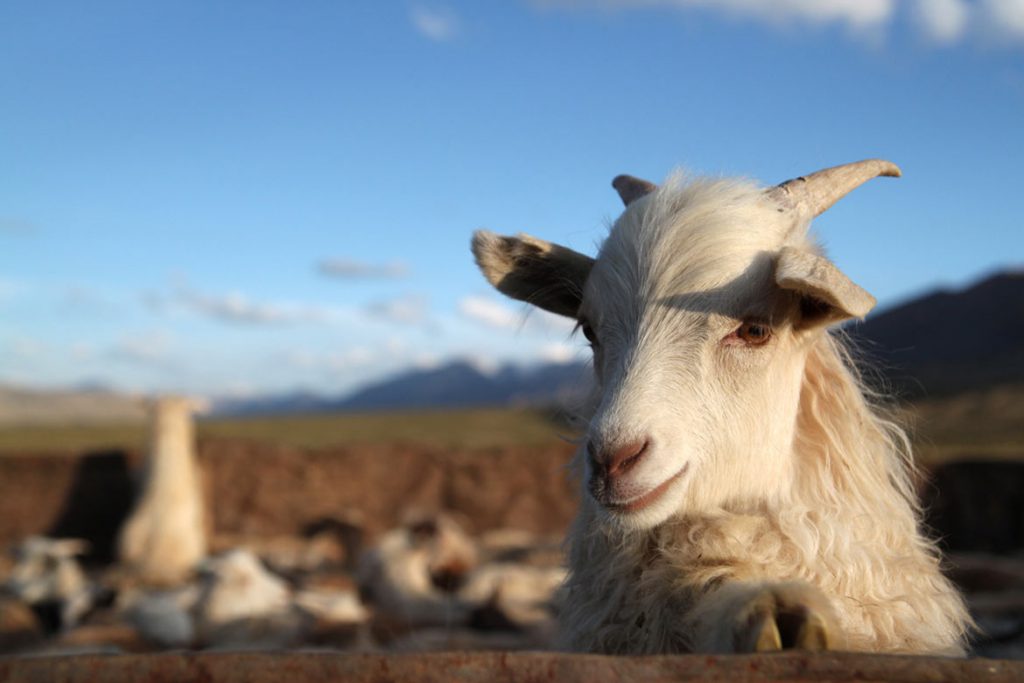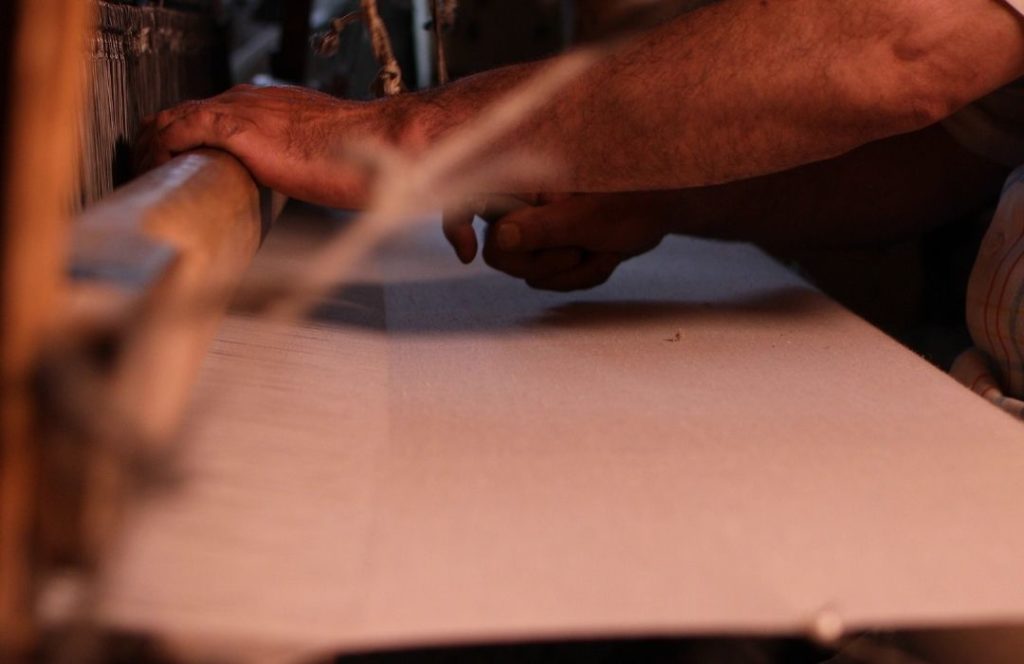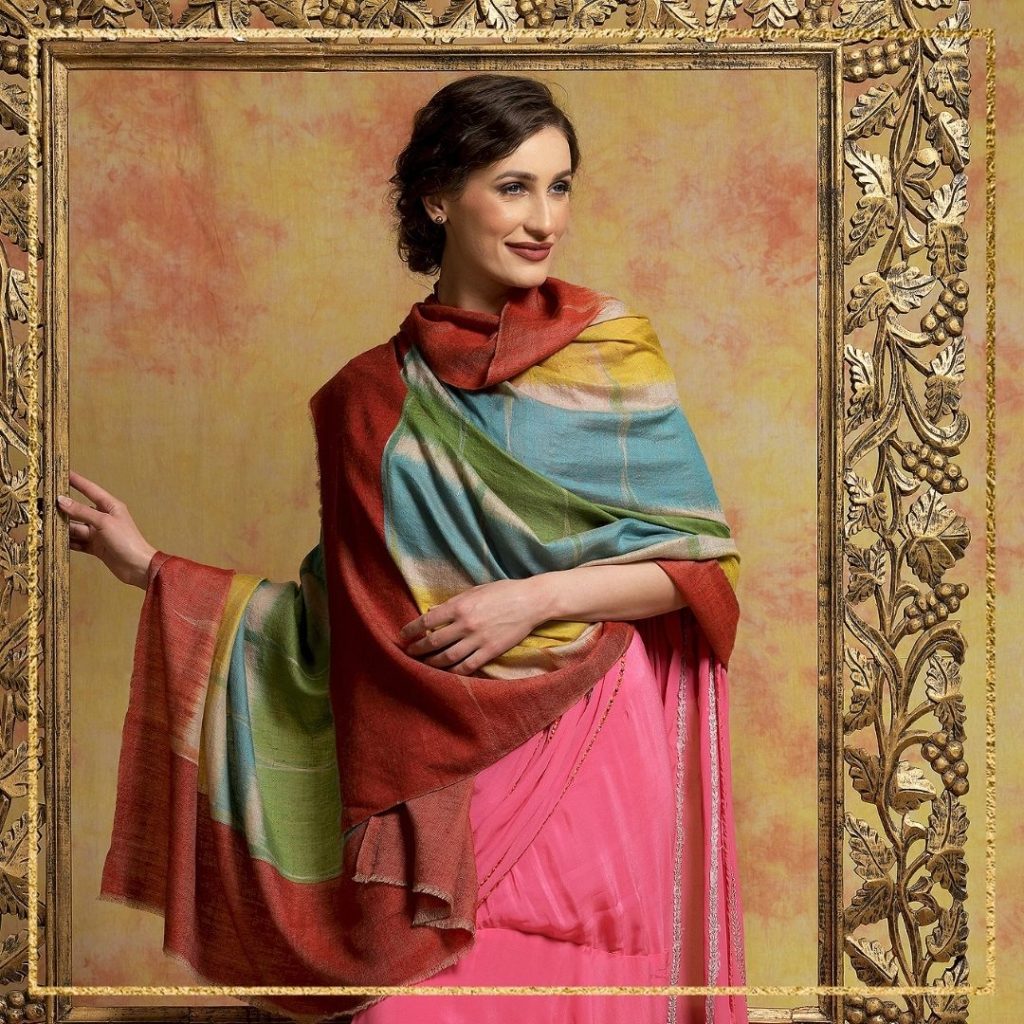Over 14000 feet above sea level, in the harshest of climates, resides a goat, rare and unique. This special breed of goat grows a fine and soft undercoat, which protects it from this harsh climate - the times when temperature scales go down to -40 degrees C. This wool is cherished all over the world, and herders, hence wait for springtime, as they can't wait to procure it. As soon as Spring arrives, and the wool makes the goat uncomfortable, herders use specialized combs to comb it off. This heavenly fine wool is Cashmere. It is later processed to craft luxury wraps, apparel blankets, and more.
Origin of Cashmere
It was the 14th century when a saint from Persia visited the valley of Kashmir. It was he who discovered this fine wool for the first time growing on the goat. Seeing its fine texture and immense smoothness, the saint immediately presented socks made from it to the then king. The king immediately ordered processing units of the same to be started, and hence, Cashmere started being processed in Kashmir. It was transformed into beautiful shawls, scarves, and wraps, which were cherished all over the world.
The word Cashmere is an anglicization of the word ‘Kashmir’ and has been coined by the British.
Making luxury Fabric
Cashmere has several types. And the types depend on the making. Hence if we know the making of a Cashmere wrap or scarf, we will understand the types well.

The making of this luxury fabric starts from the terrains of Ladakh, where the rare and unique Changthangi goat resides. In the harsh winters of Ladakh, the goat grows a fine and soft fleece as a defense mechanism. This wool is lost naturally by the goat as seasons change. Hot weather brings about a hormonal change in the goat’s body and it rubs its body against coarse surfaces to get rid of the hair. This hair is collected by its herders and packed to be sent for processing.
Processing:

The processing of Cashmere starts in Spring when the packets are opened and wool is acquired. This wool is spun by womenfolk, who spin it with their hands and a spinning wheel. The rough wool gets transformed into fine threads by spinning it. Spun threads are mounted onto handlooms, where these are woven into fabrics. These fabrics can be shawls, scarves, wraps, or just solid fabric.
Types of Cashmere
The types of Cashmere depend upon the making. On the basis of thread fineness, ply, and weave, Cashmere is divided into categories.
Fineness
Cashmere is often graded A, B, and C and this depends upon how pure and how fine the thread is when processed.
The best type of Cashmere has graded A type where the fine thread is just 12 to 16 microns in diameter. This type of Cashmere is entirely handmade, and there is no interference from machines. The next type is type B or Grade B where the thread is thicker than Grade A type of Cashmere. This is around 20 microns, and hence products made from this thread are thicker. The last grade is grade C Cashmere, where the micron count is 25 or even 30. This is used to make sweaters usually as wraps or shawls of this kind that are thick like wool.
Ply
Ply is the count of Cashmere threads that are twisted together to create the threads that will be used to weave a fabric. One-ply is hence thinner as just one thread is used to weave fabric. This fabric is thinner and more elastic, as well as less warm than others. Two-ply Cashmere is the one when two threads are twisted together to weave a fabric. These are thicker than one play and thinner than three-ply ones which are thick and heavy
Weave
The loose weave of Cashmere threads results in finer and more sensitive Cashmere fabric. This is prone to cuts and tears as it is the least sturdy. Tight weave fabric, on the contrary, is tightly woven, and threads lie close to each other. As a result, the fabric is more sturdy, thick, and warm.
Also read: DOES CASHMERE AGE WELL?
What is the best type of Cashmere?

The best type, as far as this luxury wool kind is concerned, is the one which is the purest in its acquisition and making. Purest threads of Cashmere acquired from Ladakh should be hand spun and handwoven. This results in the making of the best type of Cashmere. It is lightweight, warm, and immensely graceful. Ladakhi Cashmere is considered the best variety, as this is just 12 to 16 microns thick.
The type of Cashmere also depends on the user's choice. Some like their shawls and wraps thick, and hence deliberately opt for a machine-spun scarf or wrap. On the contrary, others keep it natural and simple and choose handmade yet delicate beauties to adorn their winter apparel.
Also read: THE SPECIAL STEPS OF MAKING A PASHMINA SHAWL
Which is the best amongst Cashmere types?
We have already learnt about the many types of Cashmere that the Himalayas produce. Amongst all these Cashmere types, it is the Ladakhi Cashmere that wins the race. Ladakhi Cashmere is produced by a goat species that is locally known as the Changthangi goat, owing to its homeplace being Changthang.
Why is Ladakhi Cashmere so special?
Ladakhi Cashmere grows as a downfibre over the body of the Ladakhi goat. The goat survives a harsh temperature (which goes down to -40 degree Celsius), and nature blesses it with the Cashmere wool for protection. This way, the entire winter season becomes bearable for the goat. As soon as summer season arrives, the goat experiences certain hormonal changes and starts to lose the same wool. A part is naturally lost and the remaining portion is gently combed by the herders. This is collected and processing of this fine wool starts.
Processing Ladakhi Cashmere
Processing Cashmere that comes from Ladakh is a meticulous task and pretty painstaking too. for this reason the best of the best craftsmen are chosen. Kashmiri craftsmen have excelled the art of transforming raw Cashmere wool to fabric. This has been so from centuries together.
Kashmiri artisans clean Cashmere thoroughly as soon as it arrives. To start with, it is handed over to women who clean it thread by thread and this process takes days together, sometimes weeks. Cleaned Cashmere is spun by women over traditional spinning wheels and this process transforms Cashmere wool lumps to the finest threads. These threads are handwoven over hand looms, and a fabric comes into existence. The fabric can be shawls, scarves, wraps, or simply fabric. Cashmere fabric can be further processed to make apparel and accessories.
Where does Cashmere clothing come from?
Since the 15th century, it is Kashmiri Cashmere that has gotten all love and desirability from around the world. From Europeans Nobles to local Indian rulers to even commoners who could afford this luxury, it was Kashmiri Cashmere that stole hearts. Cashmere clothing, which comes from Ladakhi Cashmere had made royals swoon over it. Here are a number of reasons why Ladakhi Cashmere (processed in Kashmir) is considered the best.
- Ladakhi Cashmere is the softest of all. Hence apparel or wraps made from it are never itchy and can be worn even by those who have the most sensitive skin.
- Ladakhi Cashmere is the warmest of all Cashmere types. Cashmere clothing which comes from Ladakhi Cashmere is so warm that one barely needs a sweater of cardigan when wearing it. The second best in line is the Mongolian Cashmere.
- Cashmere that comes from Ladakh and is processed in Kashmir is always processed manually. There is no interference of machines which makes Ladakhi Cashmere products sustainable. (Sustainability of Ladakhi Cashmere products comes from other factors too. Manual processing is just one of those).
- Ladakhi Cashmere is the finest of all. Owing to its fineness, Wraps made from it are lightweight and hence easy to carry around. This feathery light weight makes Cashmere wraps and apparel ideal when travelling to colder regions.
- Kashmiri Cashmere has a royal reputation. It was the Kashmiri Cashmere shawl that was gifted by Emperor Napoleon to his wife Empress Josephine. The empress, who was fashionista of those times, loved the shawl so much that she placed an order for a few hundred shawls in her lifetime. It is believed it was the Kani Pashmina shawl, made from Ladakhi Cashmere.
Concluding
We are absolutely in love with Ladakhi Cashmere products. These have a different and unique charm when it comes to appearance. As far as their feel is concerned, these are the softest, most warm and the most comfortable pieces. Cashmere shawls are lightweight, yet the most cozy accessories all over the world.
When it comes to Cashmere types that are produced in the world, our fabric experts always recommend Ladakhi Cashmere which is processed in Kashmir. This is because Kashmiri artisans have decades old knowhow and a vast experience of processing raw Cashmere to unbelievably fine fabric. These artists of the art have been involved through generations and are even now fighting to keep Cashmere shawl making alive and thriving.